Theme parks and attractions Disney announced but never built
The best-laid plans sometimes fall through, even for Mickey Mouse, and Disney has publicly announced many projects in its storied century of magic-making that were ultimately canceled: rides, resorts, and sometimes entire parks.

Whether due to budget cuts, creative decisions, or, y’know, a pandemic, a long list of canceled Disney attractions fill the pages of Disney history. Let’s take a look at (some of) them in chronological order.
Liberty Street and Edison Square at Disneyland
This unintentional tradition of canceled Disney attractions began with Walt Disney himself at practically the dawn of the Disney theme park. Walt had high hopes for a project called Liberty Street, a new area intended to connect with Main Street, U.S.A at Disneyland.
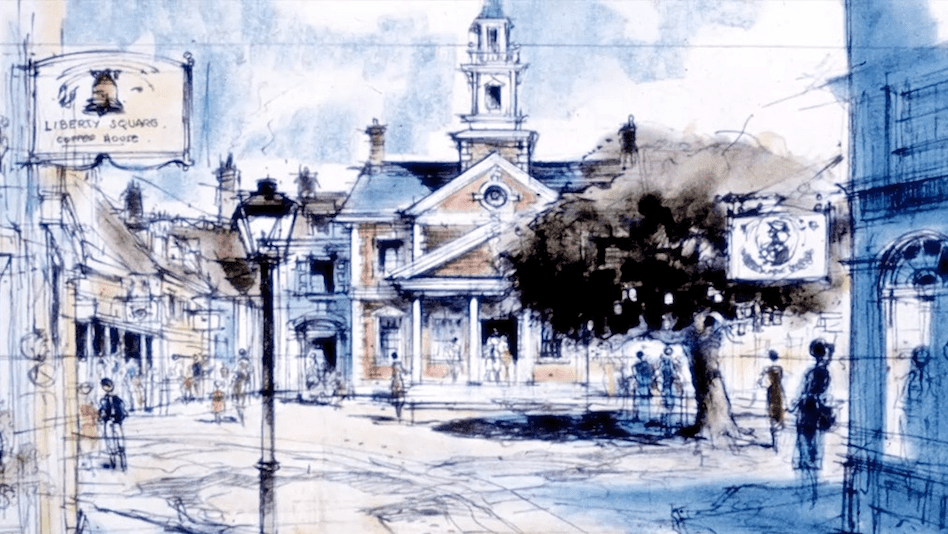
In 1956, just one year after Disneyland’s opening, Walt Disney Productions announced Liberty Street in a press release. In 1957, Walt laid out the plans on national television during his weekly primetime series.
Liberty Street would have included two major attractions: The Hall of the Declaration of Independence (focusing on the drafting and signing of that important document) and The Hall of Presidents of the United States. The former was never built; the latter had a long road to fruition, finally opening as The Hall of Presidents at Magic Kingdom in 1971.

We’ll take a closer look into the details of Liberty Street, as well as its never-built next-door-neighbor, Edison Square, on AttractionsMagazine.com soon.
More Muppets at Disney-MGM Studios and Disneyland
In January 1990, then-Disney CEO Michael Eisner announced a slate of Muppet projects for multiple parks. Eisner teased a 3D film, a stage show, and a parade for Disney-MGM Studios. For Disneyland, Eisner was more vague, but affirmed a Muppets attraction was in the works there.
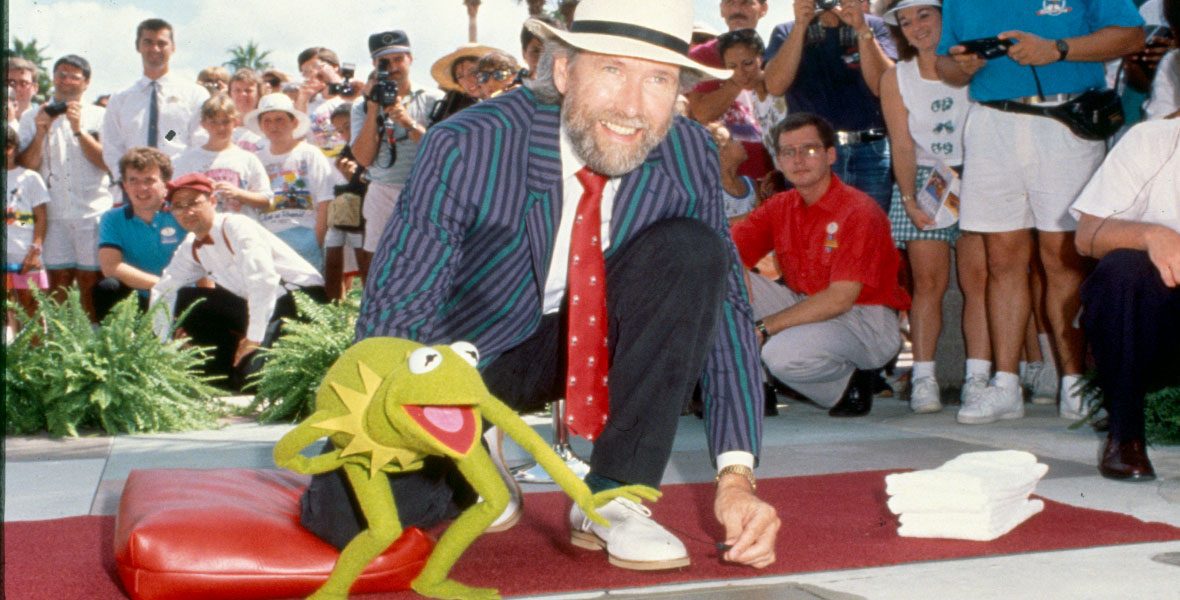
The 3D film and stage show — Muppet*Vision 3D and “Here Come the Muppets” respectively — opened as Eisner promised. A Muppet parade at Disney-MGM Studios never happened, nor did the Disneyland attraction. The west coast eventually welcomed a clone of Muppet*Vision 3D, but not until Disney’s California Adventure opened in 2001.
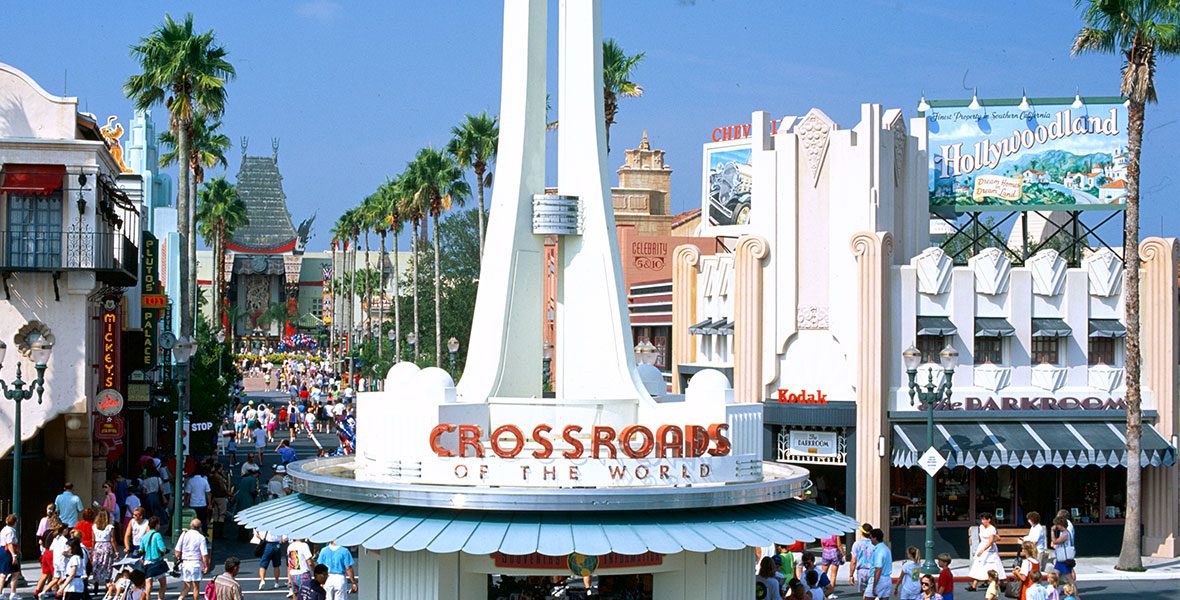
Disney and Jim Henson had also been collaborating on ideas for Muppet Studios, an entire land at Disney-MGM Studios. Credible sources remain scarce about this project, and most of what we know about it came to light after it was abandoned.

Photo by Blake Taylor
The closest Disney came to publicly acknowledging Muppet Studios while the land was still in development seems to have been the July 1990 issue of the Disney Channel Magazine, an official company publication, preserved on Muppet Wiki. In an interview conducted just weeks before his May 1990 death, Jim Henson told the magazine about a Muppet Studios ride that would parody the rest of the park.
“It’s the flip side of the rest of the Disney-MGM Studio, which tells you how movies are really made,” Henson teased. “We’re doing it in the most stupid way possible, using lots of misinformation.”
Following Henson’s death, the Muppet Studios ideas didn’t pan out.
Port Disney and Westcot Center, Disney’s canceled California theme parks
In the early ’90s, Disney publicly announced ambitious plans for two new destinations in California — one in Long Beach and another in Anaheim — but openly admitted they would only build one of them.
Port Disney intended for Long Beach would have included a theme park called DisneySea, an aquarium, and five hotels. Westcot Center, planned to be adjacent to Disneyland in Anaheim, was set to feature a west-coast counterpart to Florida’s Epcot. The Anaheim plan also included an expansion of Disneyland’s surrounding areas to emulate Walt Disney World’s feeling of a resort property, complete with more hotels and a shopping/entertainment district.
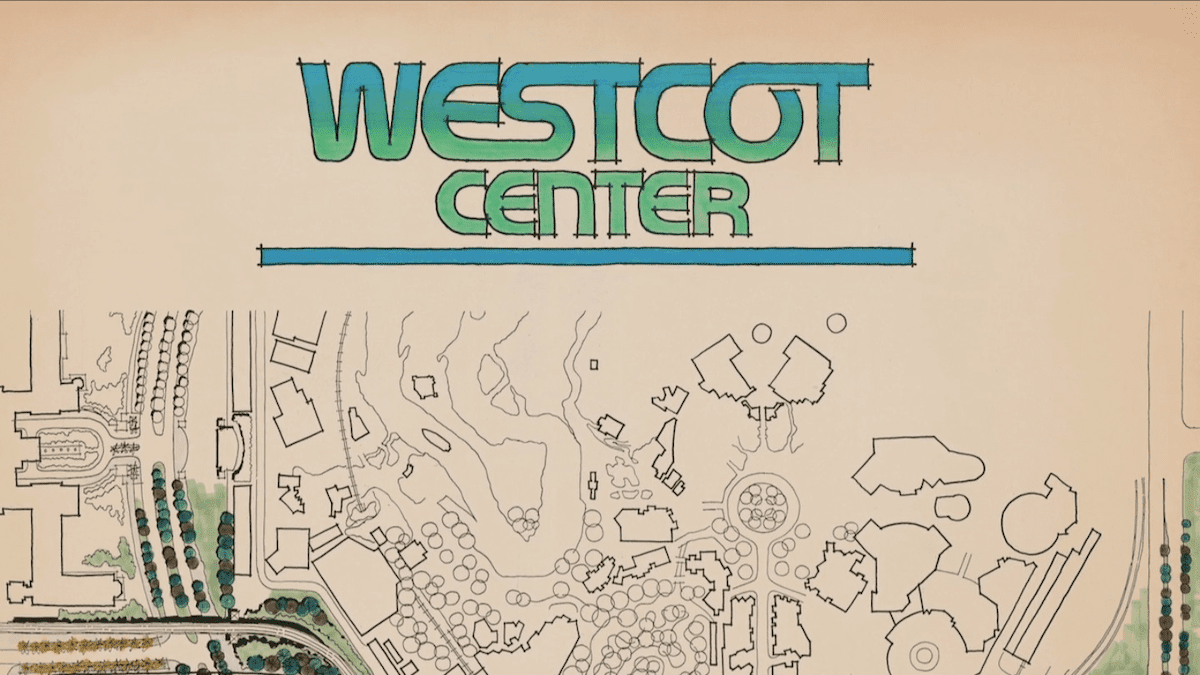
While Disney ultimately built the improvements for Disneyland’s perimeter, which became Downtown Disney and its surrounding hotels, neither Port Disney nor Westcot came to pass. Disney indeed favored Anaheim over Long Beach, but abandoned the Westcot idea in favor of Disney’s California Adventure. The DisneySea idea for Long Beach liberally morphed into Tokyo DisneySea. Both parks opened in 2001.

We’ll explore more details about Disney’s fascinating transparency of conceptualizing two parks — with the intention of canceling one of them — in a future story on AttractionsMagazine.com.
Disney’s America, A Controversial Park Proposal
In November 1993, Disney announced a new theme park called Disney’s America. The park would be located in Prince William County in Virginia, near Washington, D.C.
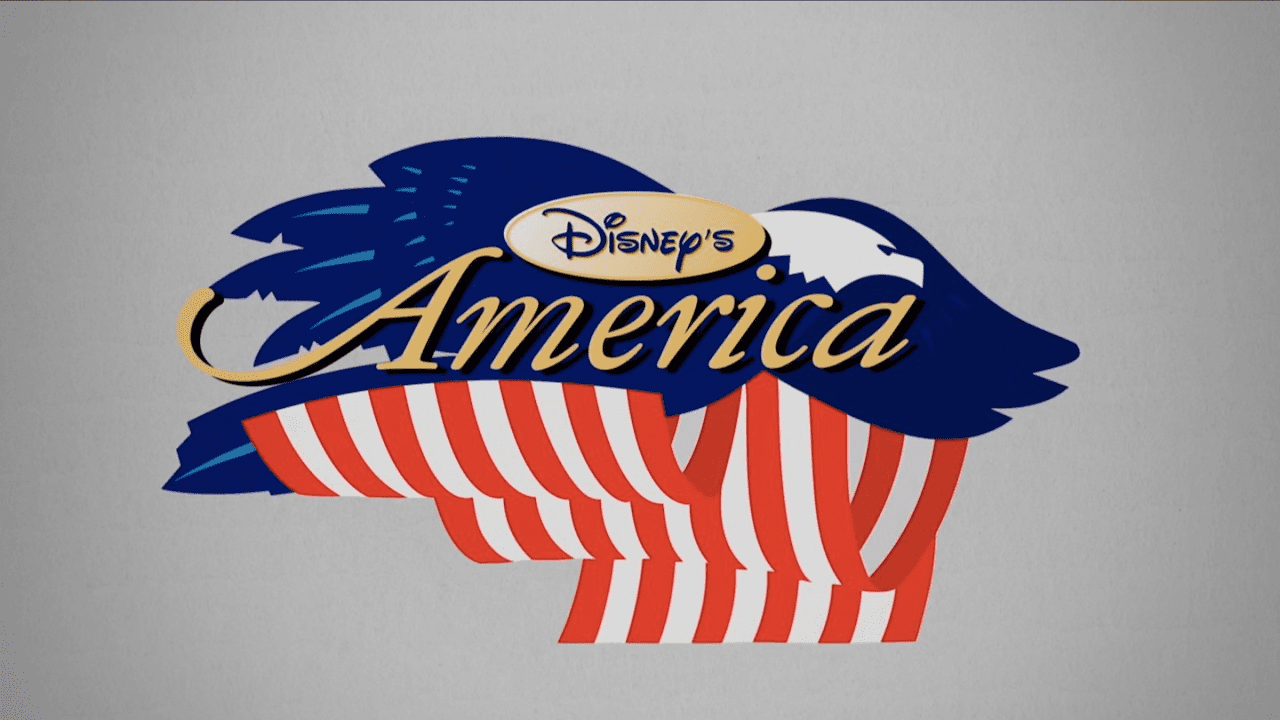
Disney’s America would immerse guests into different eras of the nation’s history. The park’s name, while simply intended to distinguish the destination as belonging to the Disney brand among other attractions in the area, may have unintentionally sent an antagonistic message forewarning a sanitized experience. How would “Disney’s America” differ from the real thing?

After all, the notions of nostalgia and idealization were core aesthetics of existing park areas like Main Street, U.S.A. or Liberty Square. They seemingly got a pass, though, for being surrounded by obviously fictional surroundings like fairytale castles. In this new endeavor, though, the fantasy would feel heightened. For many concerned Americans, that was unacceptable. This was an entire park, not one area, and it would be in close proximity to real history, to boot.
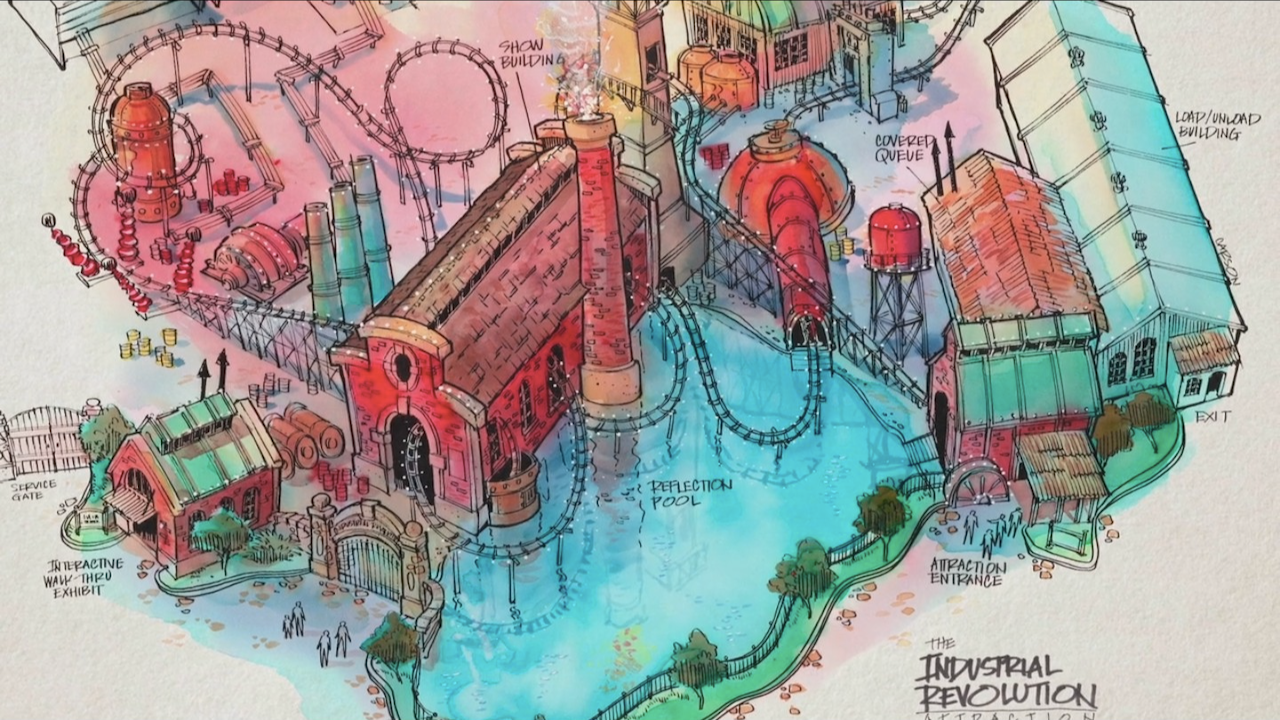
Controversy surrounded Disney’s America at every turn, escalating with a protest of almost 3,000 people in September 1994. Less than two weeks later, Disney canceled its plans to build the park in Prince William County. And while the company expressed interest in finding a less controversial location, it never did.
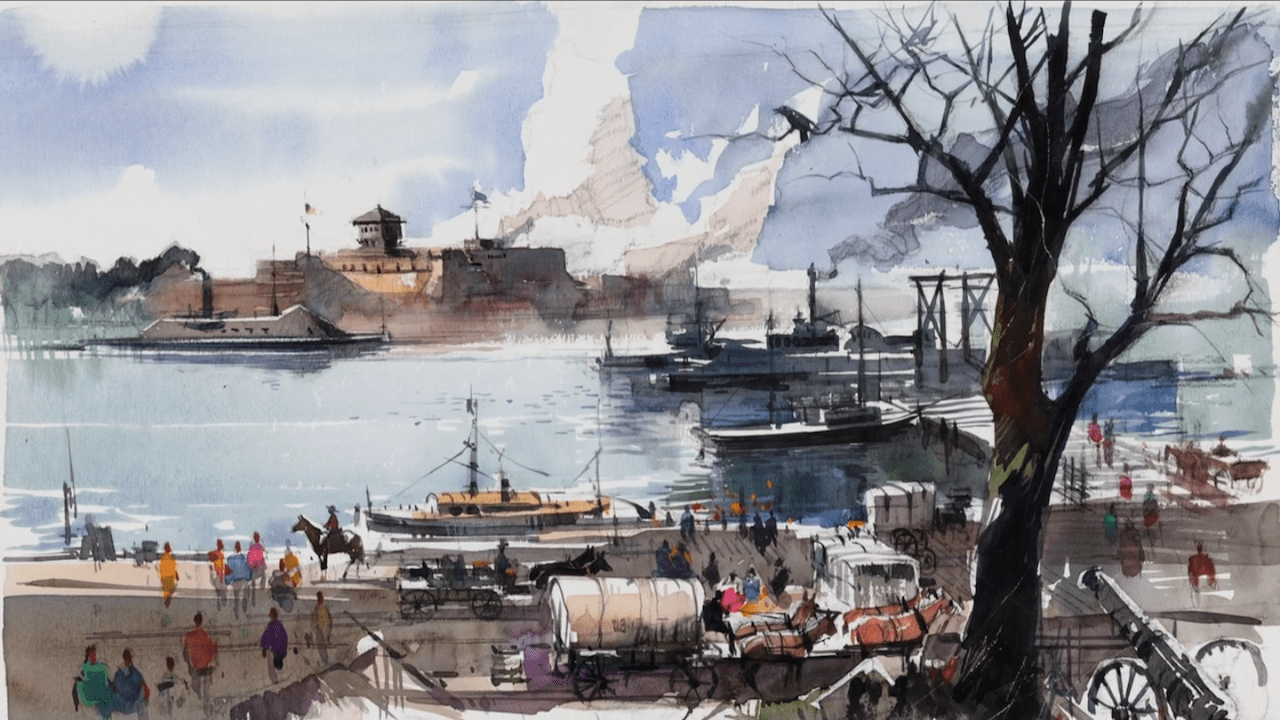
Director Leslie Iwerks shared a condensed oration of the saga of Disney’s America in episode 3 of her docuseries “The Imagineering Story” on Disney+, as well as a more detailed account in her book of the same name. Three days before the park’s cancellation, Los Angeles Times reporter Faye Fiore wrote a multifaceted profile of the tension facing the project.
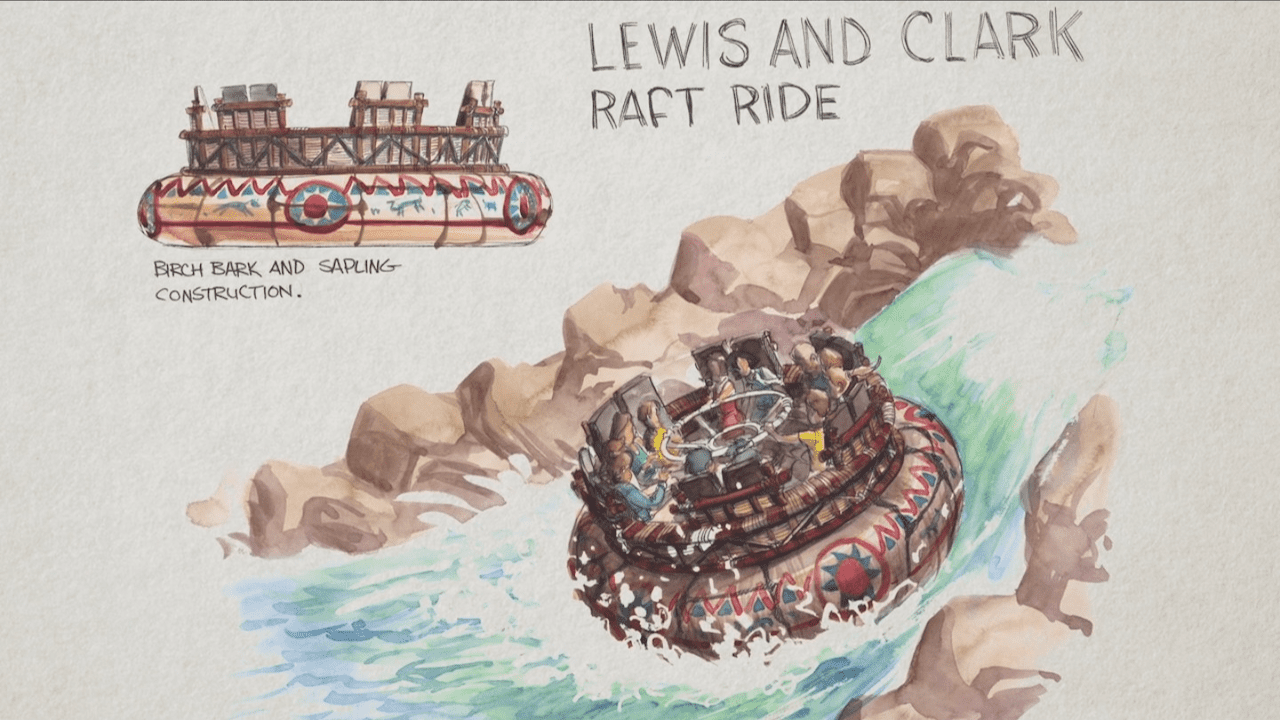
The Legendary Years, the Other Half of Pop Century
Today, Disney’s Pop Century Resort and Disney’s Art of Animation Resort at Walt Disney World exist as two separate hotels. They’re next-door neighbors, located across Hourglass Lake from one another, but they’re each their own entity. However, that wasn’t the original plan.
In December 1999, Disney announced a new, unnamed resort celebrating the entire 20th century. Themed areas would honor decades from the 1900s through the 1990s.
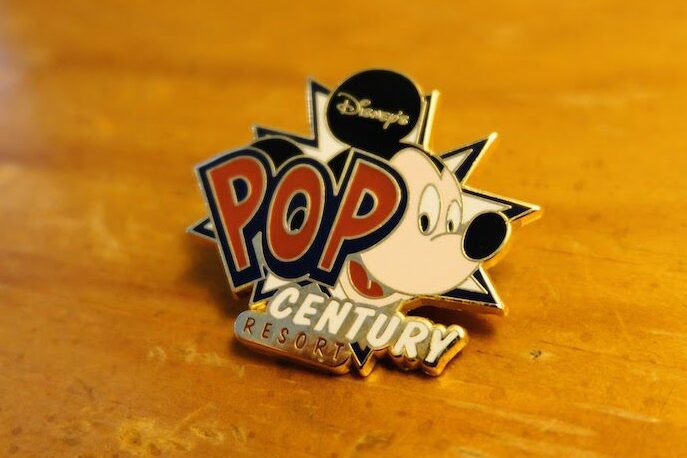
By June 2001, the property known as Pop Century was slated to open in two phases, as reported in the Orlando Sentinel. The latter half of the century would be “The Classic Years,” while the front half would be “The Legendary Years.” Notably, Disney seems to have always planned on developing the two sections on separate timelines, the Sentinel noting Disney’s intention not to begin construction on the Legendary Years until the Classic Years opened.
Following 9/11, Disney indefinitely postponed Pop Century. In December 2003, the Classic Years finally welcomed its first guests, with the Legendary Years still planned for the future. As the years progressed, though, Pop Century guests could plainly see the unfinished Legendary Years buildings, abandoned mid-construction. Its main building even displayed themed numbers of its decades’ styles.
In May 2010, Disney officially put to rest the possibility of completing the Legendary Years as it announced Art of Animation. The new concept, themed to Disney and Pixar animated films rather than decades, materialized in May 2012.
Fantasyland Forest and Abandoned Plans for Princesses and Fairies
At the first D23 Expo in September 2009, then-Disney Parks chairman Jay Rasulo confirmed rumors of an expansion to Magic Kingdom’s Fantasyland.
The area would be called Fantasyland Forest. The executive revealed now-familiar favorites like Enchanted Tales with Belle, Be Our Guest Restaurant, Under the Sea: Journey of the Little Mermaid, and the doubled-capacity Dumbo the Flying Elephant. Rasulo also revealed details for a few attractions that would never come to pass.
Leveraging the basic concept of Enchanted Tales with Belle and duplicating it with other princesses, Disney planned to build not only Maurice’s cottage, but also Aurora’s childhood home and the Tremaines’ manor.

Like Belle’s experience, these attractions would be more than a traditional meet and greet. Guests would craft birthday cards for the namesake of “Sleeping Beauty.” Next door, they could join Cinderella to learn how to dance like a royal or protect the kingdom like a knight. The spring 2010 issue of Disney Twenty-Three Magazine referred to these attractions as “A Birthday Surprise for Princess Aurora” and “Dreams Come True with Cinderella,” respectively.

Meanwhile, Disney planned to replace much of Mickey’s Toontown Fair with Pixie Hollow from the then-new Disney Fairies franchise. Disney remained vague in describing Pixie Hollow other than mentioning character greetings. Concept art (visible in the video below) depicted the tree from the movie series.
In January 2011, Disney announced significant revisions to its initial plan, which resulted in several canceled Disney attractions. Gone were Cinderella, Aurora, and Tinker Bell. In their place would be Seven Dwarfs Mine Train and an extension of the previously announced Dumbo area. The project as a whole was now called New Fantasyland, not Fantasyland Forest.

To accommodate these changes and still provide a dedicated place to meet princesses, Disney would build Princess Fairytale Hall. The new character greeting venue would permanently replace Snow White’s Scary Adventures.
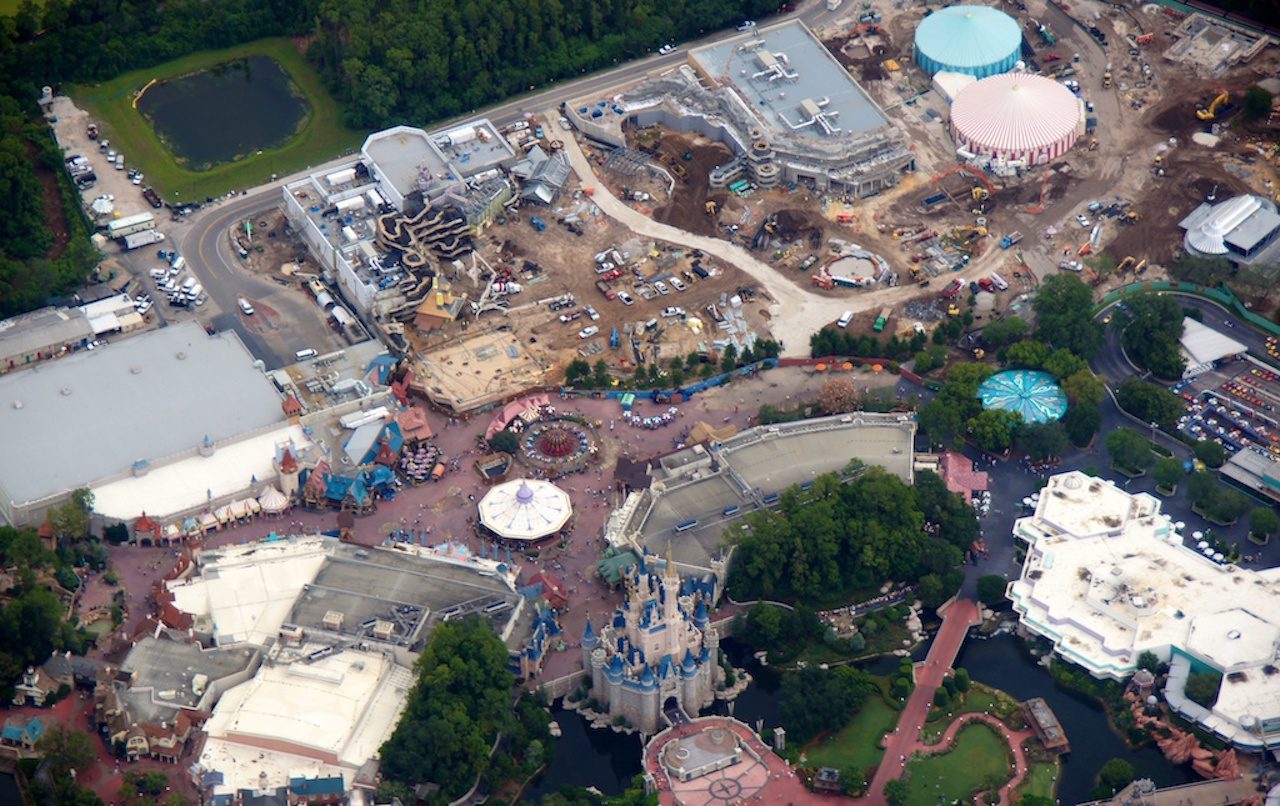
Photo by Attractions Magazine
Hyperion Wharf, an early concept for Disney Springs
Disney Springs as we know it today wasn’t Disney’s first idea to re-imagine the former Downtown Disney. In November 2010, the company announced Downtown Disney’s middle area, previously known as Pleasure Island, would transform into Hyperion Wharf, to be completed by 2013.

Disney described Hyperion Wharf as a “vibrant waterfront district.” The refresh would be “a nostalgic yet modern take on an early 20th-century port city and amusement pier” with signature shops and restaurants.
The Downtown Disney name would seemingly remain as the monicker for the property at large. The destination would still comprise three neighborhoods: Marketplace, West Side, and now Hyperion Wharf.
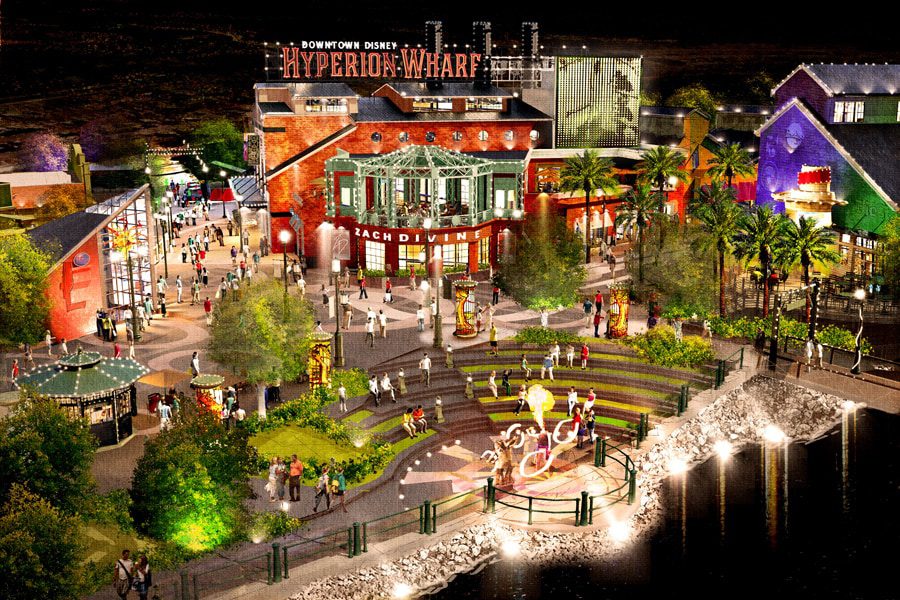
In July 2011, Disney publicly backtracked on Hyperion Wharf. As construction had commenced, the Disney Parks Blog posted, “we identified opportunities to further refine our master plan and are pausing to evaluate them.”

Disney announced its new direction, to be called Disney Springs, as a rebrand of Downtown Disney in March 2013. The project celebrated the opening of its re-imagined middle section, now called Town Center, in May 2016.
Indoor Theater on Main Street at Magic Kingdom
The Disney Parks panel at D23 Expo 2017 contained a multitude of huge announcements from then-Disney Parks chairman Bob Chapek, including Mickey & Minnie’s Runaway Railway, Tron Lightcycle / Run, Remy’s Ratatouille Adventure, Guardians of the Galaxy: Cosmic Rewind, Space 220, the Disney Skyliner, Pixar Pier, and Avengers Campus. Phew!
But there was another announcement made during the same presentation that would never see the light of day: An indoor theater for Magic Kingdom, to be built adjacent to Main Street, U.S.A. The exterior would be inspired by Willis Wood Theater in Kansas City, Walt Disney’s former home.

The news was welcome. Magic Kingdom had been short one performance venue since the 2009 closure of the Galaxy Palace Theater in Tomorrowland. Furthermore, the park had (and still does not have) an indoor space for live productions.

Disney never detailed a specific production it had in mind for the Main Street theater, and following D23 Expo 2017, Disney didn’t mention the theater project again.
Fourth Disneyland Resort Hotel
In June 2016, Disney announced plans for a luxury hotel at Disneyland. Construction on the fourth onsite overnight option for guests would commence in 2018 for a 2021 opening. The Disney Parks Blog shared concept art in October 2017, saying the new hotel’s “extensive landscaping and water elements will create a resort oasis, showcasing nature on every level of the hotel.” Located adjacent to the west coast’s Downtown Disney, the new hotel would even feature a monorail station inside.

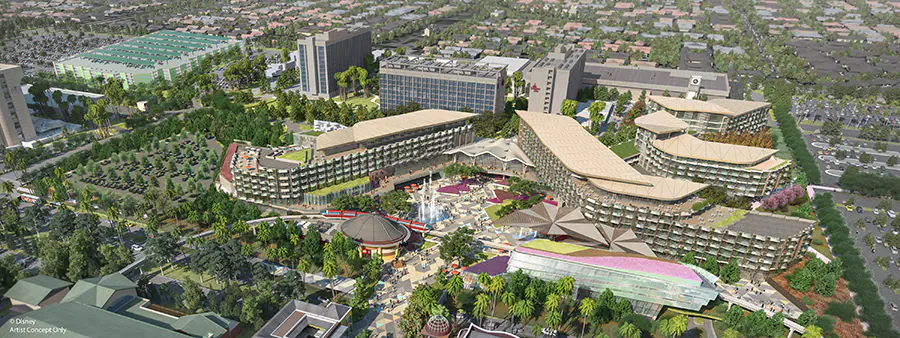
By August 2018, though, Disney had abandoned the project following disagreements with the city of Anaheim. By November 2019, the company had moved on, turning its attention instead toward building a new Disney Vacation Club tower. That project materialized as The Villas at Disneyland Hotel, which opened in September 2023.
Reflections, a DVC Resort on the Grave of River Country
Walt Disney World closed its first water park, River Country, in 2001. Located near Disney’s Fort Wilderness Resort & Campground, the abandoned water park sat dormant for years.
In October 2018, Disney announced a nature-themed resort would be built somewhere along Bay Lake as a Disney Vacation Club addition. Progress from there moved quickly. The following month, the company announced the resort’s name: “Reflections – A Lakeside Lodge.” The month after that, Fort Wilderness Pavilion (home of Mickey’s Backyard BBQ, a character dinner) closed permanently in preparation for the upcoming resort’s construction.

Reflections was still actively in development in March 2019 when our editor, Matt Roseboom, visited Walt Disney Imagineering headquarters. He called the plans Imagineers showed to his tour group “unlike anything you’ve ever seen — if the best parts don’t get cut.”
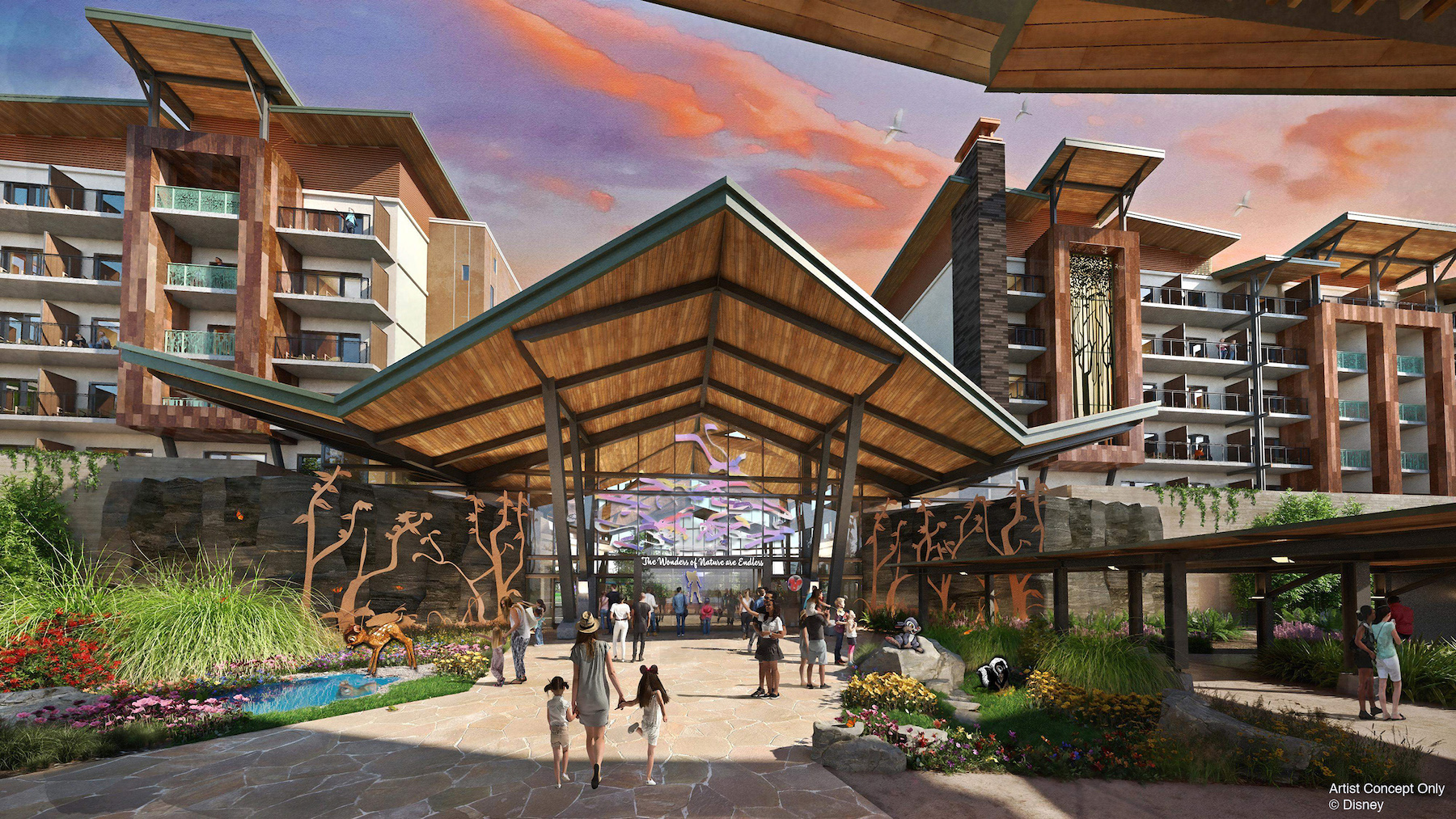
By August 2020, upon Walt Disney World’s re-opening following the onset of the pandemic, Disney had halted construction on Reflections. In March 2022, the company announced a Disney Vacation Club tower for Disney’s Polynesian Village Resort. That tower is still under construction at the time of this writing, but Disney has remained quiet on the formerly announced (and now uncertain) Reflections DVC project.
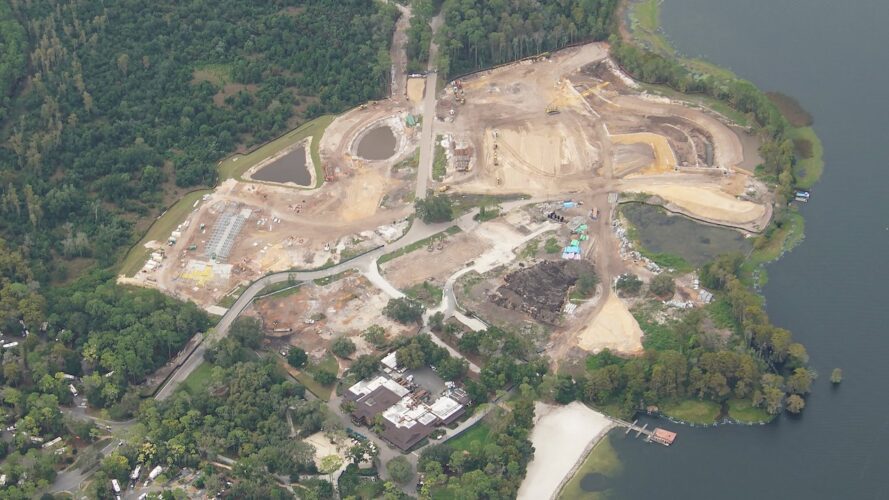
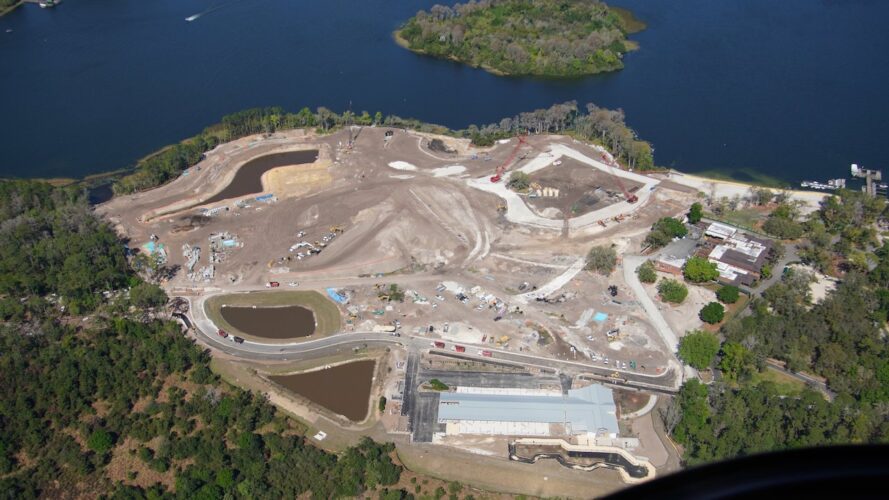
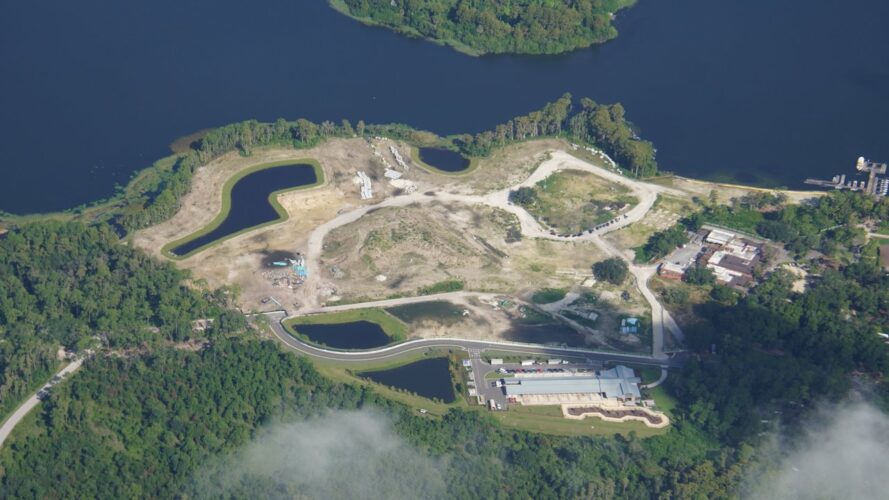
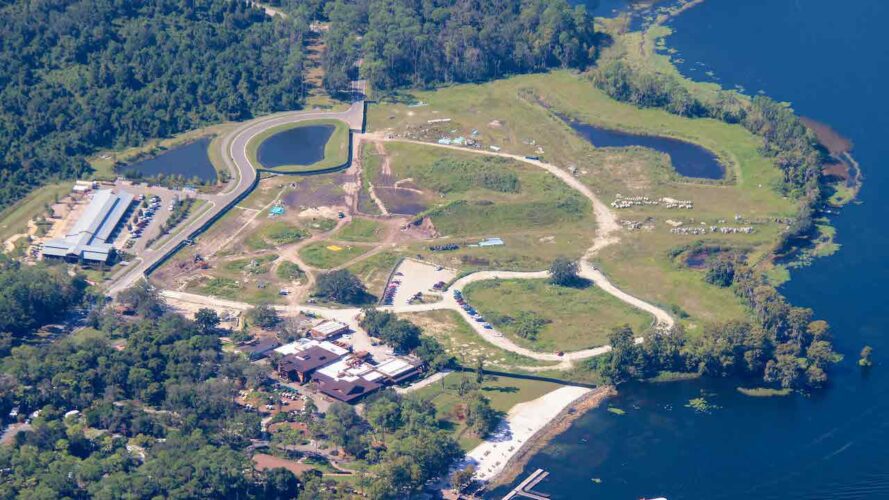
Photos by @bioreconstruct on X
The Avengers’ Quinjet Journey to Wakanda
Looking ahead, Imagineers plan on adding a major attraction to Avengers Campus at Disney California Adventure. However, the plan that’s now in motion is different from what Disney originally announced for the space.
At D23 Expo 2019, Imagineer Scot Drake revealed a major Avengers attraction would join the previously announced Spider-Man attraction within the park’s then-upcoming land.
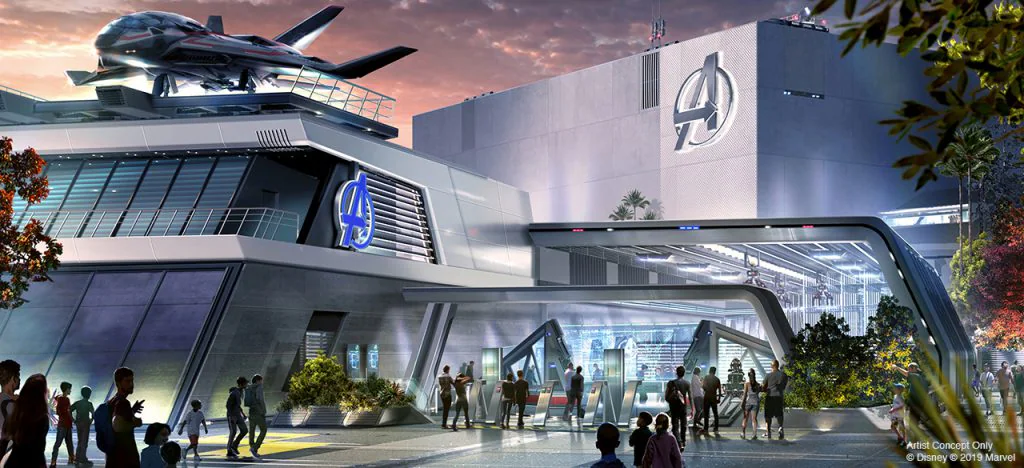
Flying in a Quinjet, just like in the Marvel movies, guests would join the Avengers in Wakanda “in a battle to save our world.” The attraction would feature an “all-new, innovative ride system.”

By D23 Expo 2022, these plans had apparently changed. There, Chapek confirmed Avengers Campus would still receive a big addition, but the ride would now focus on a multiverse battle against King Thanos. This variant of the villain succeeded in his plans to keep the world wiped of half its existence.
At the time of this writing, this version of the project is still on track. It’s unclear if the ride vehicle, revealed by Imagineer Brent Strong at D23 Expo 2023, was what the Imagineers had designed from the beginning, or something new entirely.

The Promises of Epcot’s Transformation
With the arrival of the Journey of Water “Moana” walkthrough, the Luminous fireworks, the central plaza, and the new festival center, Epcot’s multi-year transformation is nearly at its “completion,” according to Disney.
The past several years, Epcot’s ongoing overhaul has included the debuts of Guardians of the Galaxy: Cosmic Rewind, Remy’s Ratatouille Adventure, Space 220, the revamped entrance plaza, new films in The Land and the Canada Pavilion, and the “Beauty and the Beast” sing-along.
These efforts were all part of what Disney described as an initiative to make Epcot “more Disney, more family, more timeless, and more relevant.” The extent of the park-wide overhaul, though, is less sweeping than Disney planned.
When Chapek laid out an overview at D23 Expo 2019 of its Epcot plans, he teased a few other key projects: an undisclosed “Mary Poppins” attraction for the United Kingdom Pavilion, a new film entitled “Wondrous China” for the China Pavilion, and a previously announced new pavilion called “PLAY!” centered around high-tech, interactive games in the building formerly occupied by the long-gone Wonders of Life Pavilion. None of these seem to be part of Epcot’s future anymore.

In spring 2020, Disney announced a re-imagining of Spaceship Earth would also be among the big changes coming to Epcot. Nevertheless, following the pandemic closure and re-opening of Walt Disney World, Spaceship Earth remains in its same state, with no announced plans for a refurbishment.

We’ll take a deeper dive into what did and didn’t happen with Epcot’s transformation in a future story here on AttractionsMagazine.com.



You forgot Mineral King. Where the Country Bear Jamboree was originally supposed to be.
Don’t forget Mt. Fuji ride in Japan or Rogger Rabbit at the Studios
The first year I went to Walt Disney World was about 1979. At that time the only hotels on the lagoon and connected by monorail were the Contemporary and the Polynesian. I remember a comment, probably not a formal announcement, that the next intended hotel on the lagoon would be the Venetian, complete with gondolas. Does anyone know of corroboration of that rumor?
There where actually 3 more hotels supposed to be built, before the oil crises killed them.
And they where on the maps on the inside of the Contemporary Rooms, and on all the preview brochures.
The Asian, The Persian, and The Venetian
Eisner designed Disney’s Mediterranean to go where the Venetian was, but was too swampy so it was cancelled.
Have you forgotten the “City of Tomorrow?” The original concept for EPOCT described by Walt himself in the famous original EPCOT video…shown once to the entire Florida State Legislature and Governor in the late 60’s.